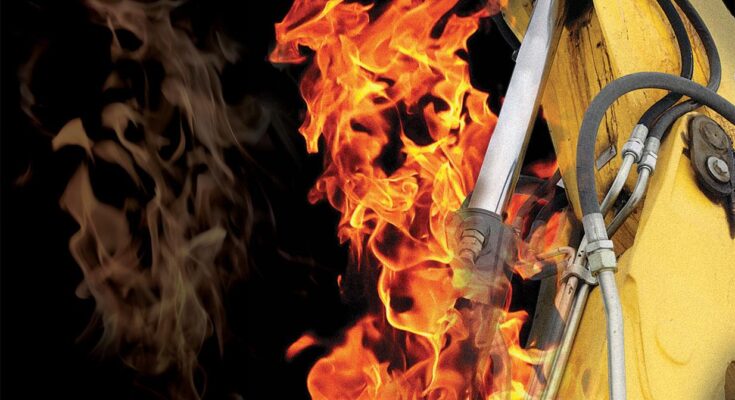Fear of fire is atavist. It’s in our nature long before we learn how to light our fire or even cook our food. Lightning would strike a tree in the forest, and everything would soon turn to ash. When people started to make permanent settlements, this fear became even greater. Before, we could just move. Now, we have so much property; if the fire struck, we would have to start all over.
This is a problem that we still haven’t completely solved.
Sure, the insurance can cover the cost, but what about the labor and time it takes to put everything back together? What about items with sentimental value? These cannot be bought back with the insurance money.
People do their best to protect their homes to avoid this worst-case scenario. The two things they use are fire retardation and fire resistance. Fire-resistant material will not catch fire, while fire-retardant material will catch fire much slower. Instead of getting immolated immediately, it will take some time to be lit aflame. This buys you some time.
Here’s how you can use both to your advantage.
Top fire-resistant ideas for your home
Placing fire-resistant materials and elements in strategic spots will drastically reduce the risk of fire. They will act as a barrier (or, at least, a checkpoint) for spreading fire and not let it go any further. Here are some fire-resistant elements for your home.
Install fire-resistant insulation
Insulation is a major threat when it comes to the spread of fire. Most non-resistant insulation materials are highly flammable, which means they’ll make matters far worse. This is why a lot of codes and regulations require you to have fire-resistant insulation. In other words, it may be a legal requirement, not a matter of choice.
Choose a fire-resistant roofing material
Generally, you should pick metal roofing, clay tiles, concrete tiles, or asphalt shingles. This way, your home will be less susceptible to fire. This is especially important if you live in areas known for wildfires. Also, having a fire-resistant roofing material will give you a much lower insurance premium. With lower risk, you get a better deal. That’s how insurance works.
Install fire-resistant windows and doors
Wooden windows and doors are other elements that will catch fire. However, what if you opt for aluminum or PVC frames instead? Not only is this more fire-resistant, but they’re also cheaper, require less maintenance, and will last much longer. Now, while these other factors will usually help you make up your mind, you should never ignore the fire hazard.
Pick from many fire-resistant landscaping ideas
When discussing fire-resistant landscaping ideas, the first thing that comes to mind is hardscaping. You can use concrete, gravel, pavers, bricks, etc., to create barriers preventing a fire from passing onto the rest of the vegetation. Also, regularly trimming plants on your property and removing dry elements will make your property harder to catch fire.
Top fire-retardant ideas for your home
Some materials cannot be made fire-resistant. So, doing your best to make them fire-retardant is the next best thing. Here are several such methods you should consider using.
Use fire-retardant paint and coatings
Now, while it will sometimes be labeled as fire resistance paint, the truth is that it’s fire-retardant. It’s there to slow down the spread of fire to your walls. While not catching fire, to begin with, sounds a lot better, the truth is that buying time in these situations can change everything. Now, you don’t have to do this in your entire home (even though it could be a good plan). Instead, do it in rooms with their fire source (boiler room, kitchen, furnace, etc.).
Consider fire-retardant treatment on wooden surfaces
The process is simple. All you need to do is find the right coating and learn how to use it. In general, you get to clean the surface, apply the treatment, allow it to dry, and apply a topcoat. Chances are that one coating won’t be enough, and you’ll have to repeat the process several times. Also, remember that since we’re talking about fire retardant, not fire-resistant, this won’t make your furniture completely fireproof.
Get fire-retardant upholstery
If you’re serious about this, you might even look for a fire-retardant upholstery for your furniture. For this to work, you’ll need to chemically treat your upholstery or buy upholstery with inherent fire resistance. For instance, wool is fire-resistant. The same thing goes for modacrylic (also used as upholstery). Just make sure that you look for the certification.
Plant fire-retardant plants around your home
You also have a responsibility to your community. If the fire breaks out, you want it as contained as possible. Sure, your primary concern is your property, but can you allow your negligence to affect others? Fortunately, you will improve upon this situation by planting fire-retardant plants like shrubs and trees with thick bark (oak or maple). Succulents and groundcovers (creeping thyme and ice plant) are also quite efficient at slowing down the fire spread.
Carefully choose curtain material
Curtains will catch fire incredibly quickly. Some might say that they’re the fuse of a much greater house fire. Some materials are more fire-retardant than others. For instance, synthetic fabrics like nylon and polyester will take longer to catch fire. The same goes for wool and cotton fabrics. These can be quite aesthetic, but you might have to pay more.
Wrap up
Making your home fire-resistant and fire-retardant is a passive boost to its safety. Why? Because it keeps everything passively safe. No matter how careful or careless you are, these things are resistant or retardant to fire. Naturally, you want to be as careful as possible. This just makes it all a tad safer.
It’s important to mention that the threat of fire doesn’t end on the edges of your property. This is why we included landscaping in both categories.




